DISCLAIMER: The author mentions practicing WHM breathing while on a walk. We want to stress that you should always practice the method seated or lying down. Intensified breathing brings a small risk of temporary loss of consciousness, and you want to be safe rather than sorry.
What if you could influence your blood glucose levels by changing the way you breathe? There are several studies that talk about stress and cortisol, and the body's ability to release insulin and process glucose. However, what does that look like in practice, and how much effort is really required? I want to share my findings using the WHM and a continuous glucose monitor.
Background
A little background on myself: I am 5’8”, weigh ~62kg, am in my mid 30s and generally in good health, with no chronic or underlying health conditions. I work in a construction yard as an engineer, so my work is a combination of desk work and walking around the yard. I had discovered Wim Hof earlier in the year, and have experienced several benefits from breathing. This blog covers the impacts I saw in my blood glucose response from breathing. The reason I decided to install a continuous glucose monitor was to understand my body's response to different foods, understand my energy levels (post-lunch sugar crash) and how glucose impacts my quality of sleep. The device I used is a continuous glucose monitor, which is installed on the arm and provides an average reading every 15 minutes.
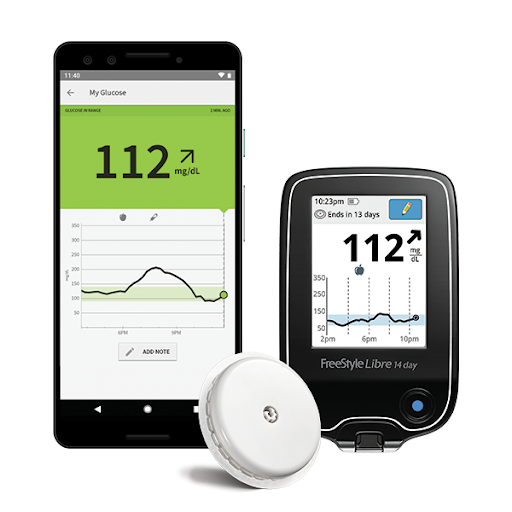
Sugar and Energy
The first insight was no surprise: post lunch slump was connected to a spike in sugar and how long those levels sustained in my body. See the graph below from Feb 24th. I had a heavy carb lunch (Biryani) at around 11:30 AM. The high sugar level persisted in my body until 5:30 that evening, and I had a brain fog and feeling of low energy, even as I walked around the yard for 30-40 mins and climbed several stairs. By the time I got home the levels were still high, so I decided to see if I could influence it with exercise, and what would be the minimum dose. Five minutes of exercise, running in place / jumping jacks was enough to activate my insulin response and get the numbers back to normal. What’s also interesting is that the response continued through dinner, and there was no spike that day from dinner.
One of the things I had read was that if you exercise for 5 mins before a carb heavy meal, your body can process it a lot better. I found that to be true, as I generally exercise for 10-15 mins in the morning, and my blood glucose response is the lowest after breakfast post-exercise. The key I found with exercise was that it had to be intense enough to impact my breathing, and at least 5 minutes in duration. While on the other hand, walking around for 30 minutes to 1 hour would have limited impact on my insulin response, as it would not alter my breathing.
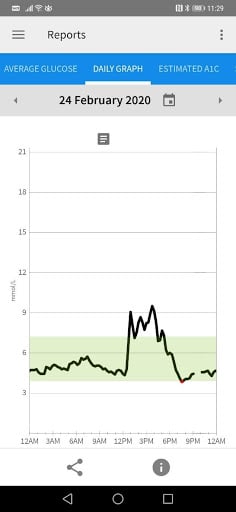
Breathing and glucose
So now I knew the duration and intensity of exercise that would manage my glucose levels and energy levels if I wanted to eat a carb heavy meal. But the issue was I didn’t want to do a pre- or post-lunch exercise while at work. I had been reading about mind-body connection, so I thought why not try and make my body believe I was exercising by visualizing and breathing. This is the part that shocked me the most. I could significantly alter my body's insulin response by breathing. See the graph below from Feb 26th. I had a very similar high carb meal around 11:30 (Biryani again) and I was monitoring my blood glucose levels. It was still high 1.5 hours after the meal, so I decided to take a slow-paced walk with WHM basic breathing: 30 deep breaths, exhale and hold. I did this for 10 minutes, and my glucose levels started to drop, my energy levels stabilized, and the brain fog started to lift.
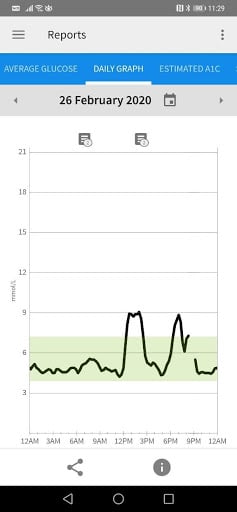
I repeated the experiment while sitting on a chair and breathing during meetings. My blood glucose level would fall and stabilize, energy levels restored, and the brain fog would lift. Although I must admit that breathing is a lot more effective while walking vs sitting, I think it is a function of how deep I can breathe while sitting. I generally used the Wim Hof Method with 30 breaths and then hold, however I have tried other yogic breathing techniques as well. What I found is that deep breathing techniques which include holds are the most effective. I must say that I'm really surprised by how big of an impact breathing has had on my glucose levels. This is the part I feel I have missed or not paid as much attention to in fitness plans – how significant of an impact breathing has on our bodies. However, life has an interesting way of playing out that once you realize something, it starts to show up more in your life. The last two nutrition programs I have looked at really emphasize breathing, and now I know why. One calls for a 5-5-5 breath pattern, while the other calls for a 6-24-12 breath pattern (inhale-hold-exhale).
Diabetes
I decided to expand the experiment to one of my friends, who has type 2 diabetes. He started doing yogic breathing exercises, and he has seen a drop in his blood sugar levels as well. One thing he did in addition to breathing was have hot water with his meals. I had also experimented with hot water and noticed positive impacts as well (½ to 1 cup of hot water). I am still working with him and on his diet as well to see if we can reverse his diabetes.
I have installed 4 sensors over the last 4-5 months, and have learnt a lot about my body’s response. From sugar levels (in my case Hypoglycemia – low sugar) linked to poor quality of sleep, to responses to various types of food, stress response etc. High carb meals have a bigger spike than low carb meals. I have understood the impact of exercise, and the fact that it is limited to 1-2 hours post-exercise. Most of these I have been able to verify with published papers / research. However, the one that I found the least amount or no information on was the impact of breathing on insulin response. That’s why I have been reaching out to various groups to see if someone would be interested in researching this further, to see if the results are repeatable.
Other useful info
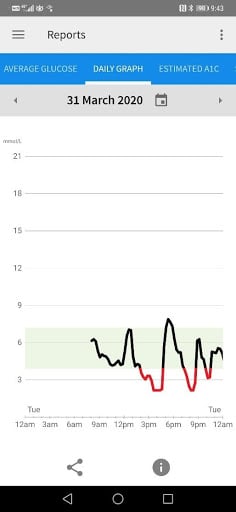
March 31st. This is the day I found out that one of the co-workers had gotten infected with COVID-19. As a result, my stress levels were really high, and it showed up by bottoming out the glucose sensor. Even 2 hours after a meal it was back down to the lowest range the sensor would go. This is real life proof for me about stress eating. I managed my stress and glucose levels the following day with multiple rounds of Wim Hof Breathing.
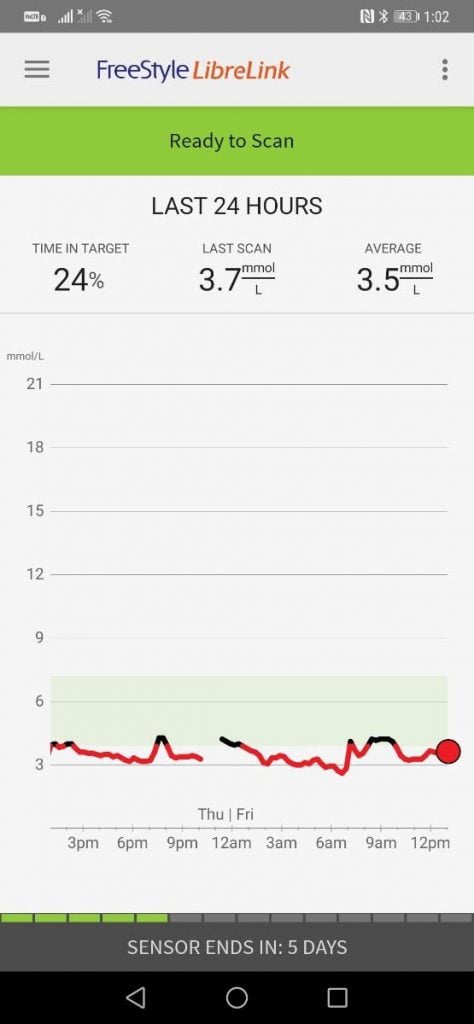
This scan is from July 10th. I have been following a nutrition program. As part of the program there are a few weeks where the body is in ketosis - green vegetables, proteins and nuts only. There is hardly any glucose response from the food I am eating, and my energy levels are much more stable. So, yes that’s an extreme but much more effective way of managing glucose and energy levels – some people with diabetes have used similar techniques to reverse their diabetes. This is a common question I get, so I thought it would be good to share here as well.
Photo by Azure Productions on Unsplash




